Called the pearl of the Adriatic for its beauty, the island of Brac is famous above all for its enchanting beaches and for its white stone with which the Diocletian's Palace and the White House in Washington were built. With its perfect climate, lush nature, picturesque villages and excellent gastronomy, the island of Brac has all the ingredients to satisfy even the most demanding tastes.
The island of Brač in Croatia
Brac is one of the largest Croatian and Adriatic islands, located in central Dalmatia , it is part of the Korculane , together with Korcula , Hvar and other islets. The island is a few kilometers from Split , from which it can be reached by ferry.
The very green island of Brac is world famous for the Zlatni rat in the town of Bol , by far one of the most beautiful beaches in the world and the main tourist destination of Brac . Its triangular shape, formed by fine gravel and stretched out towards the sea, varies according to the sea currents. Zlatni rat beach is also a favorite among surfers, thanks to its favorable winds.
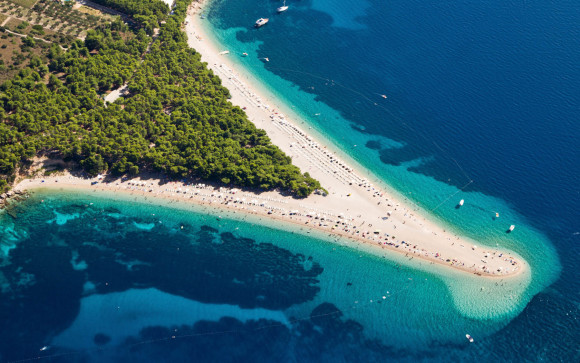
In addition to windsurfing, in Brac it is possible to practice mountain biking and diving, alternating beach life with visits to the numerous villages hidden among the bays of the island. For trekking lovers, we recommend climbing to the top of Vidova Gora (height 778 m), the highest peak of Brac, from which you have an incredible view of the Adriatic Sea and the nearby islands.
Life on the island of Brac has been based, from the very beginning, on cattle breeding, viticulture and the fishing and olive industry. It is still possible today to relax in one of the family taverns located in the interior of the island, enjoying the tranquility and tasting the local products, such as the famous Brac cheese , fresh fish, lamb, grappa and Plavac , a famous local wine. From here also comes the famous Korčula marble that embellishes the historic buildings in the villages of Brac (the same was used in the construction of great works such as the parliament in Budapest, the Reichstag in Berlin and the White House in Washington). Marble, or Brazzana stone , was extracted since the Renaissance in ancient stone quarries near Pucisca and worked by skilled stonemasons, including Juraj Dalmatinac , Nikola Firentinac and Andrija Alesi .
Today the development of the island is mainly oriented towards tourism, thanks to the climate and the charm of its beaches and villages, nestled in peaceful bays, a safe harbor for the many boaters who reach Brac by boat every year.
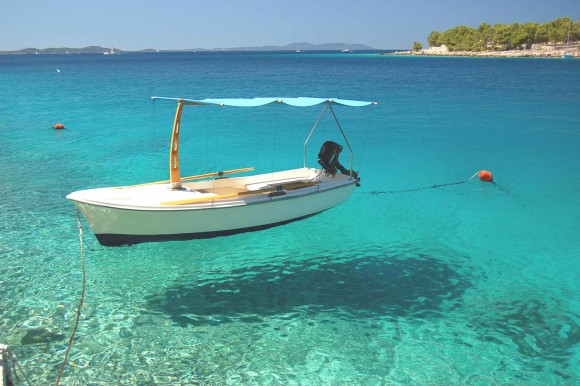
The villages of Brac
The main centers of interest are Supetar , the main port of the island, Sutivan and Milna , a small fishing village on the west coast. Bol , located on the southern coast, is the most touristic place, famous for its beaches and nightlife.
Supetar-Brac
The town of Supetar (in Italian, San Pietro di Brazza ), with 3500 inhabitants, is the main city and the capital of the island of Brac . Located in the northern part of the island, within the bay of sv. Petar (from which it takes its name), its port is connected with the city of Split by frequent ferries (journey time is about 40 minutes).
The history of Supetar is historically linked to the Italian one, and its rich cultural and historical heritage dates back to the times of the Roman Empire and the Venetian Republic. In Supetar you can visit the church of the Annunciation of Mary , dating from the 18th century and built on the foundations of an early Christian basilica, with a beautiful bell tower and a museum inside. Near the church there are some remains of early Christian mosaics.
Also worth a visit is the Supetar cemetery where the white dome of the neo-Byzantine mausoleum of the Petrinovic family . Above Supetar is the church of Sv. Luka , one of 19 preserved Romanesque chapels on the island of Brac , dating back to the 11th century. Inside the chapel the representation of the oldest ship in Dalmatia . All around Supetar, surrounded by olive groves and vineyards, it is possible to admire the traditional country houses with a round plan and a domed roof.
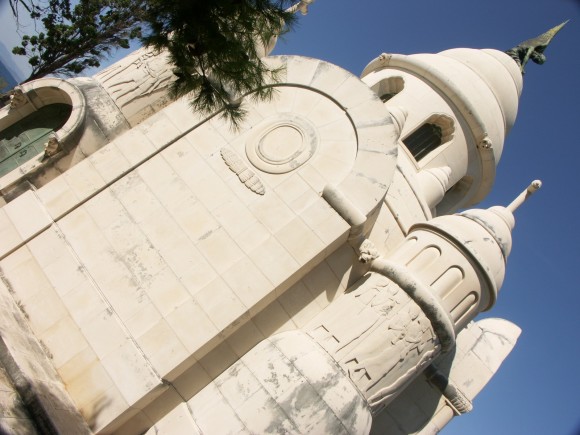
Thanks to its beautiful landscapes, numerous beaches and bays in the surroundings, and numerous accommodation and entertainment options, Supetar meets the expectations of the many tourists who come here every summer to spend their holidays. A walk through the cobbled streets and small squares of Supetar is enough to breathe the spirit of the coastal villages of Dalmatia . Supetar offers a wide choice of accommodation, including hotels, villas, houses and apartments, combined with a multitude of restaurants, bars and nightlife venues.
Supetar is an excellent starting point for visiting the island of Brac and the nearby islands, thanks to numerous organized excursions and daily sailing trips to the islands of Hvar and Vis .
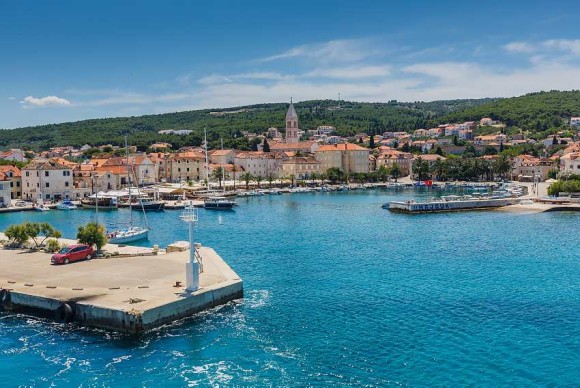
Bol–Brac
Bol , located on the south coast of Brac , represents the most tourist destination on the island. Located at the foot of Mount Vidova Gora (778 m), the highest peak of the Adriatic islands, the town of Bol is known for the Zlatni rat , also called the "Golden Horn" , due to its triangular shape reaching towards the sea . Composed of fine gravel that looks golden, the tip of Zlatni Rat constantly changes its shape under the influence of winds, waves and sea currents, appearing different every time. In the surroundings of Bol there are also other beautiful sandy and pebble beaches that stretch for kilometers, surrounded by nature, and are definitely worth a visit.
In addition to postcard beaches, Bol also boasts a rich cultural and architectural heritage, including Baroque palaces, churches and small squares. It is worth visiting the Dominican monastery , founded in 1462, which houses a rich collection of maritime archeology, Roman and early Christian sculptures, and sacred objects. In the museum there is also a work by Tintoretto depicting the Madonna and Child with Saints.
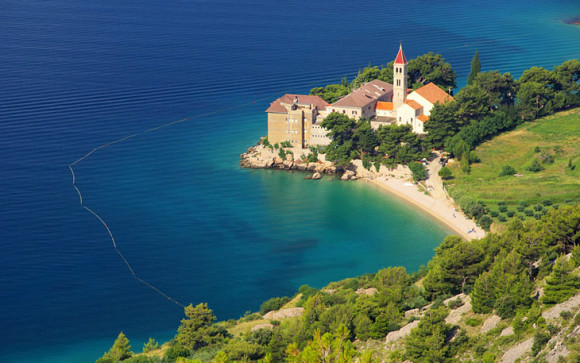
In Bol you can practice many sporting activities. For tennis enthusiasts there are about twenty tennis courts and a stadium where the Jadranska rivijera and WTA Croatian Bol Ladies Open . And it is still possible to practice cycling, trekking, free climbing and above all windsurfing and kitesurfing , thanks to the constantly favorable winds.
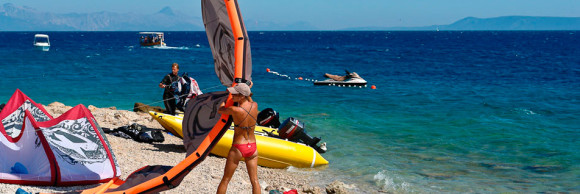
Thanks to numerous hotels, rooms and apartments in Bol , there is always a large offer of accommodation of all kinds. You can also come here without having booked in advance as there are always some vacant apartments and last minute offers. You can address the people you see on the street holding the sign with the inscription "Apartmani" (apartments), they will lead you to visit the nearest vacant apartments. Otherwise, contact the tourist office in the city centre.
Milna–Brac
Milna (its name means “Valley of a thousand ships” ) is located on the west coast of the island of Brac , 18 kilometers away from Supetar . It is a favorite destination for boaters thanks to its hospitable bays: in fact Milna is also a natural port (the latter was a safe landing place for the imperial fleet during the construction of the Diocletian's Palace in Split) and is considered one of the most beautiful and protégés of Brač . The village has two well-equipped harbours, which can satisfy even the most demanding yachtsmen.
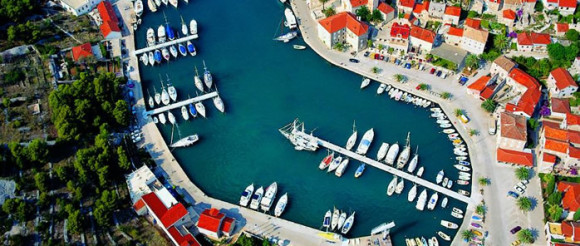
The town, founded in the 16th century by the Cerinic , was in the past a renowned shipyard: in the 19th century, the first examples of bracera brazzera " taking its name from the island) were built, typical Dalmatian ships.
The town is dominated by the two-storey houses belonging, in the 18th and 19th centuries, to shipowners and their captains. In the middle stands the Baroque church with a bell tower, in the typical Dalmatian style, inside which some Venetian paintings are preserved.
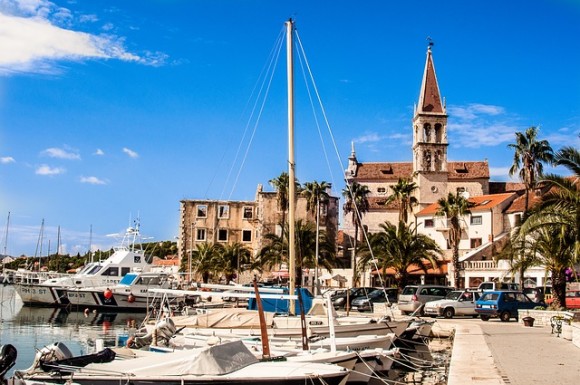
the town of Milna offers visitors crystal clear sea and excellent Mediterranean cuisine, based on fresh fish, olive oil and high quality local wines. It is possible to explore in the surroundings many hidden beaches in the shade of pine trees, such as the nearby bays of Lučica , Osibova , or visit the small port of Bobovišća and the nearby village of Lozišće .
A short distance from the coast, in front of the entrance to the port, stands the islet of Mrduja , always very crowded with small boats and motorboats.
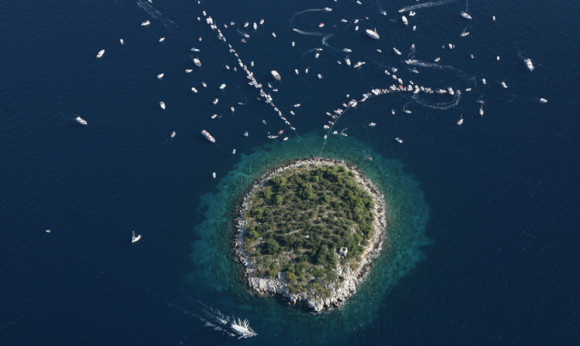
Mirca – Brac
Mirca is a small village located about 3 kilometers west of Supetar , in the direction of Sutivan , on the northern coast of the island of Brac . In Mirca you can breathe the atmosphere of small coastal villages. The beautiful sandy beaches and in the shade of lush pine forests, away from the crowds and bustle of the cities, the traditional cultivation of vines and olive trees, make Mirca an ideal destination for families and anyone looking for relaxation and beach life.
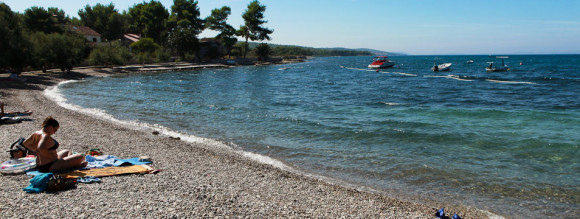
Postira – Brac
Postira , located on the northern coast of the island of Brac between Splitska and Pucisca , was originally a small fishing village, today a vacation spot for many tourists during the summer period, with a rich offer of hotels and apartments for rent. The village is characterized by narrow streets that branch out among a multitude of stone houses, typical of Dalmatia.
In the surroundings of Postira there are many small bays (such as those in Lovrečina and Konopjikova ) with pebble and rocky beaches surrounded by green pine forests. In the summer it is also possible to attend some popular festivals, including the celebrations of San Giovani Battista (June 24), the celebration of the Carmelite Madonna (July 16) and the Madonna Grande (August 15).
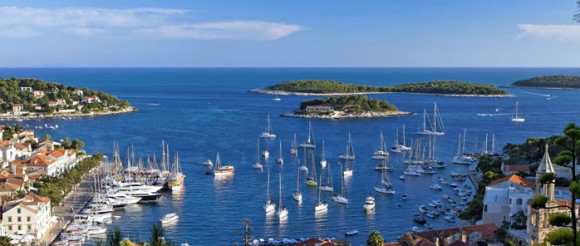
Povlja – Brac
Povlja is situated in the gulf of the same name, 10 kilometers east of Sumartin , in the northern part of the island of Brac . Proclaimed the most beautiful tourist place by the region's tourist community, Povlja offers numerous attractive bays, ideal for enjoying the bright sun and crystal clear waters, long walks and cultural beauties, good Dalmatian cuisine, along with numerous bars, pizzerias and restaurants. Povlja is surrounded by numerous coves with various beaches, and the port is located in the same bay. The tranquility of the place is ideal for a relaxing holiday.
In ancient times, the gulf of Povlja was an important anchorage for Roman ships: the name of the village derives from Paulus , a Roman who stopped here to build his palace. Even today, the remains of the village from the Roman era are found here (the current church of San Giovanni Battista was built on the ruins of an early Christian basilica).
Pucisca – Brac
Pucisca is also located in a bay on the north coast of the island of Brac , where the bay splits into two smaller ones: Puciski dolac and Stipanska luka .
In the village there are two small beaches, a few steps from the port. Pucisca is famous for the Brac stone , which was extracted from the nearby Veselje , located southeast of the village, and still worked today thanks to an important tradition of stonemasons. Pucisca was called "The port of castles" , as in the Middle Ages there were as many as 13 castles, around which today's village developed.
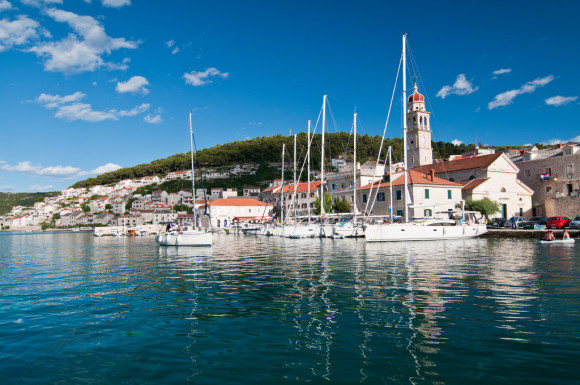
Splitska–Brac
Splitska is located on the north coast of Brac , between Supetar and Postira , embedded in a beautiful bay, surrounded by Mediterranean vegetation and azure sea. Thanks to the beauty of the village and the beautiful bays of Splitska and Zastup , with beaches surrounded by pine forest, family tourism has developed in recent years, alongside traditional crafts, such as agriculture, the cultivation of vines and olive trees.
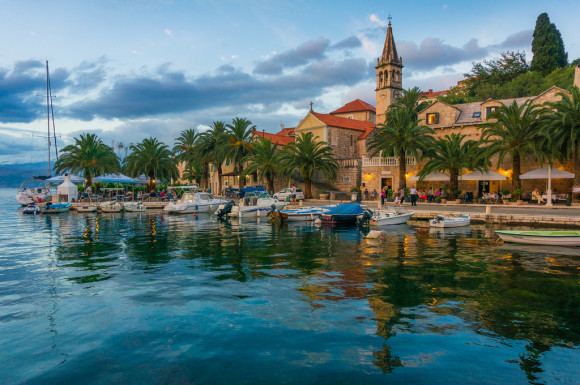
Sumartin–Brac
Sumartin is a village of 600 inhabitants, located on the eastern promontory of the island of Brac , and represents an important port of connection with the mainland, thanks to the direct ferries to Makarska . Sutivan-Makarska sea lines (with 5 ferries per day), many tourist yachts and local small boats also arrive the port of Sutivan
The village was founded in 1645 by Dalmatian fleeing the Turks, and was originally called Vrhbrac . Since its origins, its inhabitants have dedicated themselves to fishing, navigation and shipbuilding, as well as the cultivation of vines and olive trees. The current name of the village, Sumartin, derives from the Franciscan monastery of S. Martino .
Today, clean sea, beautiful beaches, intact nature and rich gastronomic offer, make Sumartin a nice place to stay. Near Sumartin there are many quiet and hidden bays (such as Rasotica, Zukovik, Radonja, Studena, Zvirje and Spilice ) with pebble and sandy beaches.
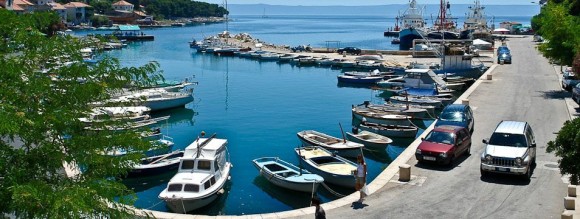
Sutivan–Brac
Sutivan is a small village located on the northwest coast of the island of Brac , exactly in front of Split (from which it is 13 kilometers away). The foundation of Sutivan dates back to the times of Diocletian which is why today the village can be said to have around 1700 years of history. The town takes its name from the church of San Giovanni Battista , built on the foundations of an early Christian basilica from the 6th century. All over Sutivan stand splendid Renaissance palaces and Baroque-style villas surrounded by typical Dalmatian stone houses.
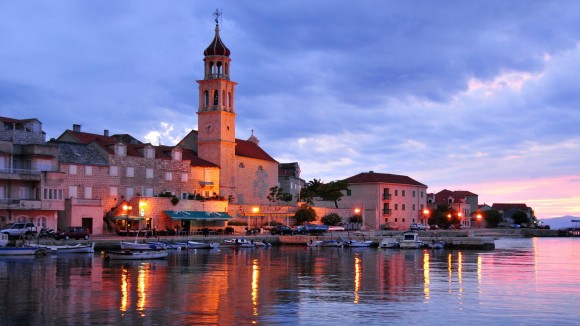
Today Sutivan is a tourist destination renowned for its beautiful beaches and natural park. Sports enthusiasts shouldn't miss the “Vanka Regule” (Out of the Rules) extreme sports festival that takes place in Sutivan every July, as well as soccer and petanque tournaments. In addition to the numerous beaches, where tourists can relax in the crystal clear waters, there are numerous paths that lead through centuries-old olive groves and vineyards, offering spectacular routes for mountain bikers and trekking enthusiasts.
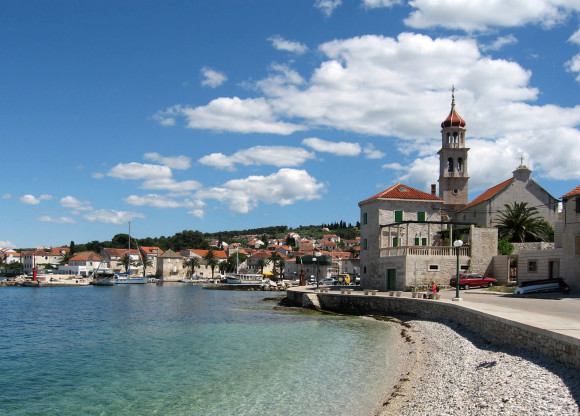
Other villages of Brac
Selca
Selca is a village located in the interior of the island in the eastern part of Brac , about 1 km from the sea. On the coast are the tourist areas of Punitnak and Ruzmarin , and the beaches of Radonja , Spilice and Zirje . Selca delights visitors with the beauty of its stone workings, the tradition of which has been preserved to this day. The buildings in Selca were built using white Brač stone, which gives the village a charm and harmonious beauty.
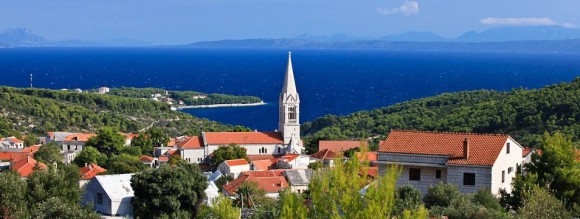
Murvica
Murvica is located near Bol , on a rocky cliff surrounded by beautiful vineyards. Here you must definitely visit the nearby Zmajeva špilja cave (dragon cave) and the Dračeva luka cove , which preserves the remains of nuns' dwellings from the 15th century. sandy beaches near Murvica are among the most beautiful on the south coast of Brač .
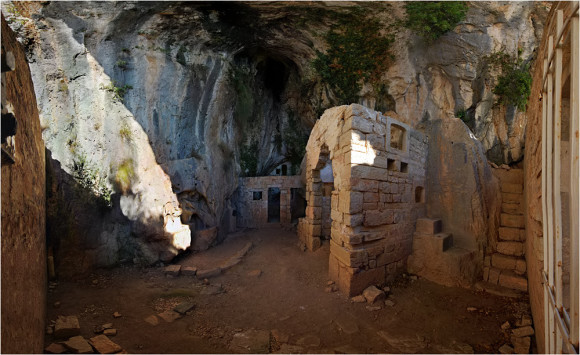
Not far from Murvica there is also the Blaca Monastery , the last refuge of the Glagolitic order, which has now become a museum.

Bobovišća
The village of Bobovišća is located on the western coast of the island, in the bay which branches off into the port of Bobovišća and the port of Vičja . The port of Bobovišća is preferred by many yachtsmen, while the bay of Vičja luka is a historical site.
Dol
Dol is a typical Dalmatian village, located in a deep valley, about 2 km from the sea. Today the town is sparsely inhabited, and mostly attracts lovers of rural tourism, fascinated by its stone houses, and its cellars, where you can taste local dishes such as lamb meat, accompanied by olive oil and local wines .
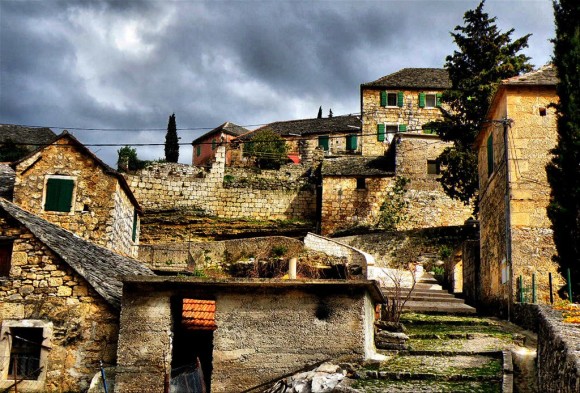
Donji Humac
Donji Humac , located on a hill 7 kilometers from Supetar , is one of the oldest villages on the island of Brač . Here are some stone houses and Roman mausoleums built with Brač stone. In the center of the village dominates the church of S. Fabiano and Sebastiano, with its Baroque bell tower.
Gornji Humac
Characterized by stone houses, narrow alleys and surrounded by untouched nature, the village of Gornji Humac is the highest village on Brac , located 500 m above sea level and 10 kilometers from Pucisca . The triptych by Giorgio da Sebenico is kept inside the church of S.Nicola.
Dračevica
Dračevica is a small village located not far from Donji Humac . In the center of the village there is a water well, around which the houses are arranged. What amazes is its luxuriant nature, with gardens full of almond trees, fields that smell of lavender and numerous olive trees.
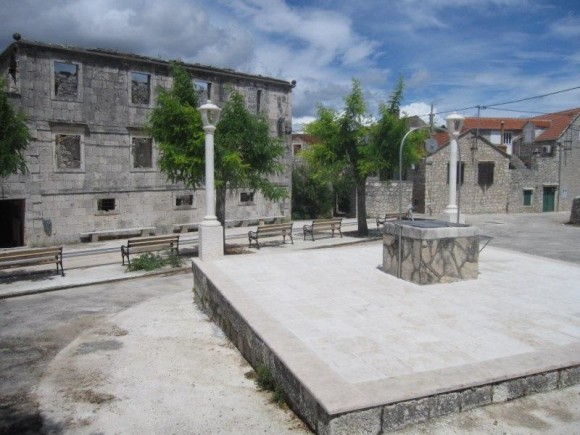
Ložišća
The small village of Ložišća is located 2 kilometers away from the sea, in the western part of Brač . In the center stands the bell tower of the church of Saints John the Baptist and Paul. It is a classic Dalmatian .
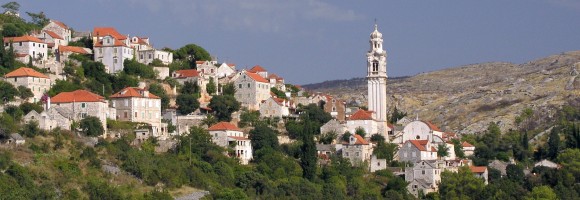
Nerežišća
The village of Nerežišća , located at the crossroads of the main roads of Brač , was in the past the administrative and commercial center of the island, and seat of the princes of Brač. In the center of the village, surrounded by stone houses, stands the church of Nostra Signora del Carmelo , from which the fascinating narrow alleys that characterize the village unravel. During the celebration of St. Margaret's Day, it is worth attending the game held in Nerežišća called “balun o ruke” (handball), an ancient game that was once played on the Mediterranean islands.
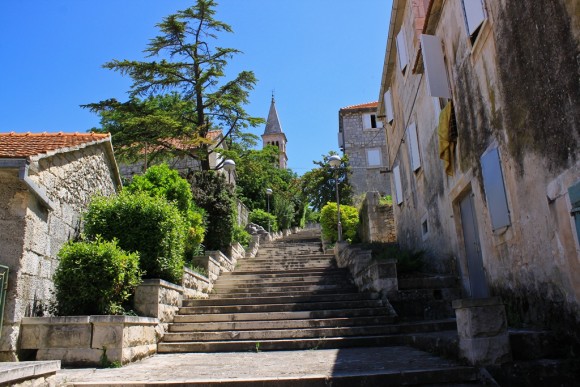
Pražnice
Pražnice is a small medieval village located on a plateau about 7 kilometers from Pučišća , known for its traditional animal husbandry.
Škrip
Škrip is the oldest settlement on the island of Brac. This village is a visited destination due to the numerous archaeological and handicraft finds of Old Brač, dating back to Roman and medieval times.

Map of the island of Brac and its locations
Škrip
Škrip is the oldest settlement on the island of Brac. This village is a visited destination for the numerous archaeological and craft finds of ancient Brač, dating back to Roman and medieval times.
Pražnice
Pražnice is a small medieval town located on a plateau, about 7 kilometers away from Pučišća , known for traditional animal husbandry.
Nerežišća
The village of Nerežišća , located at the crossroads of the main roads of Brač , was in the past the administrative and commercial center of the island, and seat of the princes of Brač. In the center of the village, surrounded by stone houses, stands the church of Nostra Signora del Carmelo , from which the fascinating narrow alleys that characterize the village unfold. During the celebrations of St. Margaret's Day, it is worth watching the game held in Nerežišća , called “balun or ruke” (handball), an ancient game that was played in the past on the Mediterranean islands.
Ložišća
the village of Ložišća is located 2 kilometers away from the sea, in the western part of Brač . In the center stands the bell tower of the church of Saints John the Baptist and Paul. It is a classic Dalmatian .
Dračevica
Dračevica is a small village located not far from Donji Humac . In the center of the village there is a water well, around which the houses are arranged. What amazes is its lush nature, with gardens full of almond trees, fields that smell of lavender and numerous olive trees.
Gornji Humac
Characterized by stone houses, narrow alleys and surrounded by pristine nature, the village of Gornji Humac is the highest village on Brac , located 500 m above sea level and 10 kilometers from Pucisca . The triptych by Giorgio da Sebenico is preserved inside the church of S.Nicola.
Donji Humac
Donji Humac , located on a hill 7 kilometers from Supetar , is one of the oldest villages on the island of Brač . Here there are some stone houses and Roman mausoleums built with Brač stone. The church of S. Fabiano and Sebastiano dominates the center of the village, with its baroque bell tower.
Dol
Dol is a typical Dalmatian village, located in a deep valley, about 2 km from the sea. Today the town is sparsely inhabited, and mostly attracts lovers of rural tourism, fascinated by its stone houses, and its cellars, in which you can taste local dishes such as lamb, accompanied by olive oil and local wines .
Bobovišća
The village of Bobovišća is located on the western coast of the island, in the bay that branches into the port of Bobovišća and the port of Vičja . The port of Bobovišća is preferred by many yachtsmen, while the bay of Vičja luka is a historical site.
Murvica
Murvica is located near Bol , on a rocky cliff surrounded by beautiful vineyards. Here you absolutely must visit the nearby Zmajeva špilja (Dragon cave) and the Dračeva luka bay , which preserves the remains of monastic houses dating back to the 15th century. the sandy beaches near Murvica are among the most beautiful on the south coast of Brač .
Selca
Selca is a village located inside the island in the eastern area of Brac , about 1 km from the sea. On the coast there are the tourist areas of Punitnak and Ruzmarin , and the beaches of Radonja , Spilice and Zirje . Selca delights visitors with the beauty of its stonework, the tradition of which has been preserved to this day. The buildings in Selca were built using white Brač stone, which gives the town a charm and harmonious beauty.
Sutivan–Brac
Sutivan is a small village located on the north-west coast of the island of Brac , exactly opposite Split (from which it is 13 kilometers away). The foundation of Sutivan dates back to the times of Diocletian, which is why today it can be said that the village has around 1700 years of history. The town takes its name from the church of San Giovanni Battista , built on the foundations of an early Christian basilica from the 6th century. Throughout Sutivan there are splendid Renaissance palaces and Baroque-style villas surrounded by typical Dalmatian stone houses.
Sumartin–Brac
Sumartin is a village of 600 inhabitants, located on the eastern promontory of the island of Brac , and represents an important port connecting with the mainland, thanks to ferries heading to Makarska . Sutivan-Makarska shipping lines (with 5 daily ferries), many tourist yachts and local boats also arrive port of Sutivan
Splitska–Brac
Splitska is located on the north coast of Brac , between Supetar and Postira , nestled in a beautiful bay, surrounded by Mediterranean vegetation and azure sea. Thanks to the beauty of the village and the beautiful bays of Splitska and Zastup , with beaches surrounded by pine forest, family tourism has developed in recent years, alongside traditional professions, such as agriculture, the cultivation of vines and olive trees.
Pucisca – Brac
Pucisca is also located in a bay on the north coast of the island of Brac , at the point where the inlet bifurcates into two smaller ones: Puciski dolac and Stipanska luka .
In the village there are two small beaches, a few steps from the port. Pucisca is famous for Brac stone , which was extracted from the nearby Veselje , located south-east of the village, and still worked today thanks to an important stonemasonry tradition. Pucisca was called "The port of castles" , as in the Middle Ages there were 13 castles, around which today's village developed.
Povlja – Brac
Povlja is located in the gulf of the same name, 10 kilometers east of Sumartin , in the northern part of the island of Brac . Proclaimed the most beautiful tourist place by the tourist community of the region, Povlja offers numerous attractive bays, ideal for enjoying the bright sun and crystal clear waters, long walks and cultural beauties, good Dalmatian cuisine, along with numerous bars, pizzerias and restaurants. Povlja is surrounded by numerous coves with several beaches, and the port is located in the gulf itself. The tranquility of the place is ideal for a relaxing holiday.
Postira – Brac
Postira , located on the northern coast of the island of Brac between Splitska and Pucisca , was originally a small fishing village, today a vacation spot for many tourists during the summer period, with a rich offer of hotels and apartments for rent. The village is characterized by narrow streets that branch out among a multitude of stone houses, typical of Dalmatia.
Mirca – Brac
Mirca is a small village located about 3 kilometers west of Supetar , in the direction of Sutivan , on the northern coast of the island of Brac . In Mirca you can breathe the atmosphere of small coastal villages. The beautiful sandy beaches and in the shade of lush pine forests, far from the crowds and confusion of the cities, the traditional cultivations of vines and olive trees, make Mirca an ideal destination for families and for anyone looking for relaxation and beach life.
Milna–Brac
Milna (its name means “Valley of a Thousand Ships” ) is located on the western coast of the island of Brac , 18 kilometers away from Supetar . It is a favorite destination for yachtsmen thanks to its hospitable bays: in fact Milna is also a natural port (the latter was a safe landing place for the imperial fleet during the construction of Diocletian's Palace in Split) and is considered one of the most beautiful ports and protégés of Brač . The village has two well-equipped ports, which can satisfy even the most demanding boaters.
Bol–Brac
Bol , located on the south coast of Brac , represents the most tourist destination on the island. Located at the foot of Mount Vidova Gora (778 m), the highest peak of the Adriatic islands, the town of Bol is known for the Zlatni rat , also called the "Golden Horn" , due to its triangular shape jutting out into the sea .
Supetar-Brac
The town of Supetar (in Italian, San Pietro di Brazza ), with 3500 inhabitants, is the main city and capital of the island of Brac . Located in the northern part of the island, inside the bay of Sv. Petar (from which it takes its name), its port is connected to the city of Split by frequent ferries (the journey time is approximately 40 minutes).
